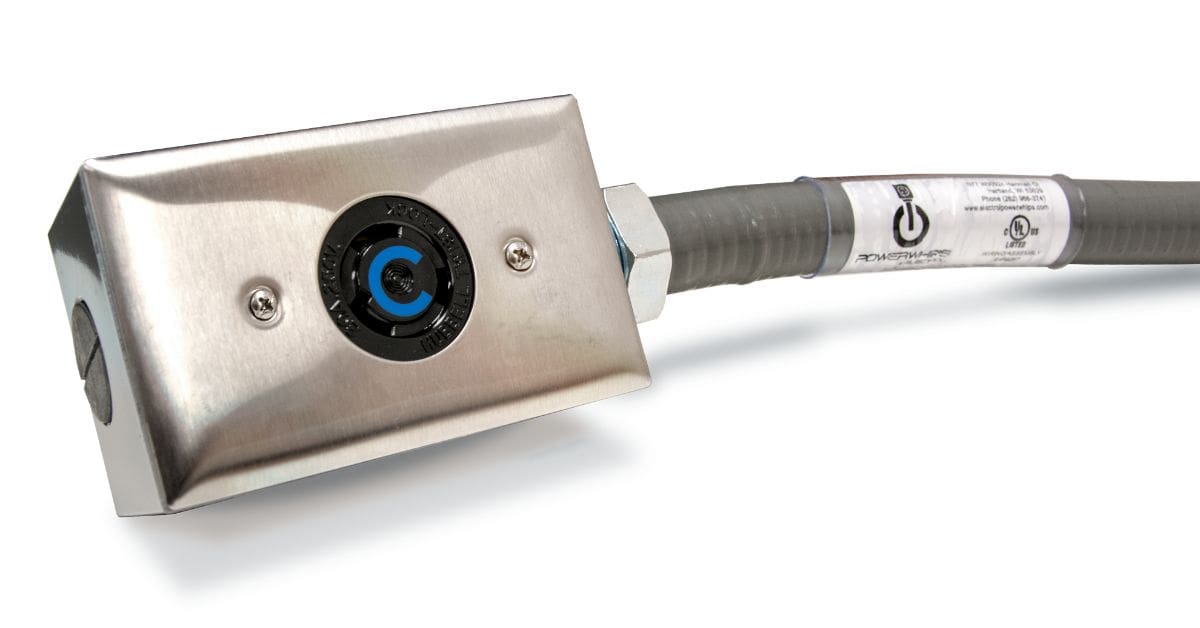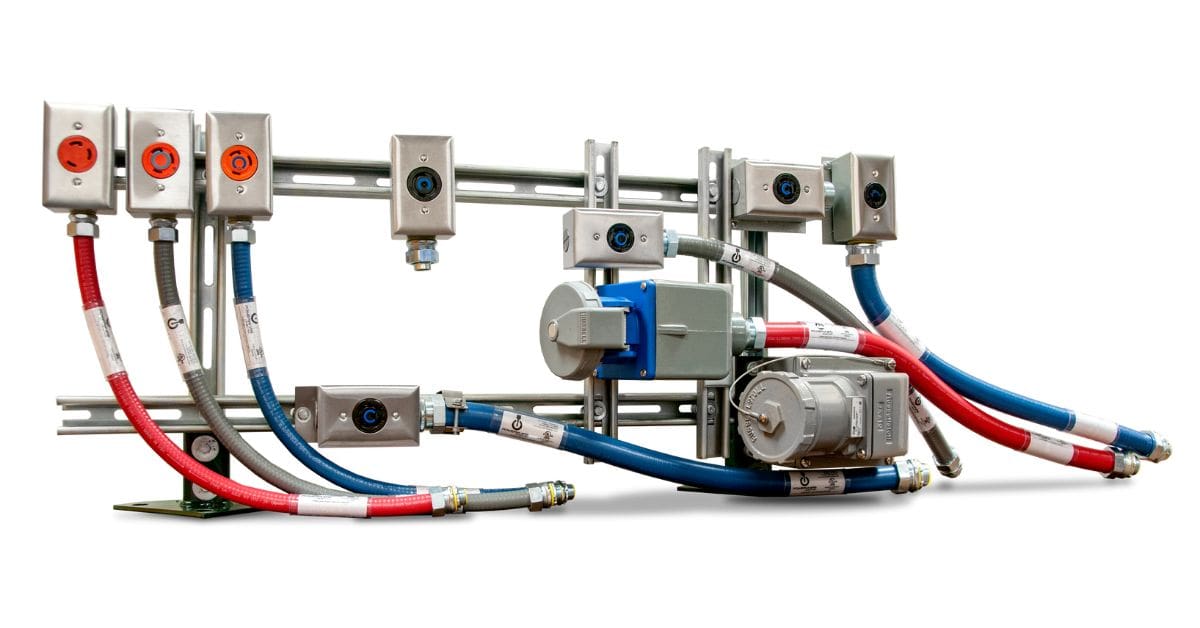
Understanding the distinctions between electrical connectors is crucial for the safety, efficiency, and compatibility of power systems in any facility, particularly in the industrial and data center industries. The differences between NEMA 5-15, 6-20, and L14-30 connectors lie in their design, capacity, and usage scenarios. Read on as we provide valuable insights into these differences, helping you make informed decisions for your business.
NEMA 5-15 Connectors
The NEMA 5-15 is perhaps the most recognizable connector, commonly used in residential and commercial settings. It is a standard plug type for general-purpose devices and appliances. This connector operates at 125 volts, with a maximum current rating of 15 amps, and features a straightforward two-flat blade configuration with a grounding pin, making it a staple in homes and offices.
Its primary use is for low-power electronic devices, such as computers, printers, and household appliances. However, its limited load capacity means it is unsuitable for high-power or industrial equipment. For electrical contractors working in environments where general-purpose power outlets are required, the NEMA 5-15 is the standard due to its simplicity and widespread use. However, its limitations become evident in more demanding circumstances.
Data center managers and co-location facilities may have NEMA 5-15 connectors in shared office spaces or areas with minimal power demands, but these connectors are unlikely to be sufficient for server racks or cooling systems. Understanding where and when to deploy NEMA 5-15 connectors is crucial to prevent overloading circuits and maintain operational integrity.

The Utility of NEMA 6-20 Connectors
Stepping up from the NEMA 5-15 is the NEMA 6-20 connector, designed for applications requiring higher voltage and current. Operating at 250 volts and supporting up to 20 amps, this connector is a durable option for settings that demand more power. Unlike the flat blades of the 5-15, the 6-20 features one horizontal blade, one vertical blade, and a grounding pin, distinguishing it from its lower-capacity counterpart.
NEMA 6-20 connectors are common in commercial and industrial environments, making them suitable for heavy-duty equipment, such as air conditioning units, power tools, and certain types of industrial machinery. Electrical contractors use this connector when working in workshops, warehouses, or retail facilities with mid-range power requirements due to its ability to handle high electricity loads. This tech reduces the risk of overheating and enhances safety.
Network switches, small servers, or auxiliary systems require a power source that surpasses the capacity of a NEMA 5-15. The 6-20’s capability to deliver higher voltage and current ensures that complicated systems, like those in data centers, can function smoothly without interruptions caused by insufficient power delivery.
Co-location facilities may also benefit from the NEMA 6-20 in powering individual equipment units, particularly when supporting a diverse range of client devices. Its versatility and elevated power-handling capacity make it a go-to solution for situations where moderate power demand still exceeds basic requirements. Recognizing the role of NEMA 6-20 connectors in these scenarios enables more strategic planning, which can improve performance and power efficiency.
NEMA L14-30 Connectors for Higher Demands
When power requirements reach industrial or large-scale levels, the NEMA L14-30 connector is the ideal solution. The L14-30 operates at 125/250 volts with a current rating of 30 amps to handle high loads. Its locking mechanism creates a secure connection, which is especially important in environments where accidental disconnections can cause disruptions.
The L14-30 connector is useful in applications such as backup generators, heavy industrial equipment, or power distribution systems. For electrical contractors, this connector offers a reliable solution for projects that require substantial and consistent power delivery. Its locking feature enhances safety and stability, particularly in environments where vibrations or external movements could compromise the connection.
Data center managers depend on connectors like the NEMA L14-30 to power technical infrastructure and support seamless operations. From large-scale uninterruptible power supply (UPS) systems to high-density server racks, the L14-30 is foundational for maintaining uninterrupted service. Its ability to deliver both 125-volt and 250-volt power makes it versatile and adaptable for various equipment needs.
The stakes are equally high in co-location facilities, and the NEMA L14-30 ensures that clients’ equipment operates without power interruptions. The locking feature this connector has minimizes accidental disconnections, a critical advantage in environments where uptime is nonnegotiable. Its high load capacity and dual voltage compatibility make it an indispensable connector for such facilities, catering to diverse power requirements with ease.

Selecting the Right Connector for Your Needs
Choosing between NEMA 5-15, 6-20, and L14-30 connectors requires a clear understanding of the power demands at hand. Each connector serves a purpose and meets unique electrical requirements. While the NEMA 5-15 is a staple for low-power needs, the NEMA 6-20 addresses moderate demands, and the NEMA L14-30 handles the heaviest loads with unmatched reliability.
Electrical contractors must understand these differences to use the right components in projects, minimize risks, and maximize efficiency. Data center managers can optimize their power strategies by aligning equipment needs with the appropriate connector, whether it’s for supporting auxiliary systems or powering entire server rooms. Lastly, co-location facility operators benefit from the versatility of these connectors, enabling them to meet varied client demands without compromising safety or functionality.
Are you seeking a durable and dependable NEMA power cable? Look no further than Electrol Powerwhips! Designed for performance and reliability, our cables meet the highest standards, delivering the power you need without fail. Whether you are setting up industrial equipment or looking for a reliable solution for your commercial needs, Electrol Powerwhips has you covered. Contact us today!
Implementing NEMA Connectors
The correct implementation of electrical connectors extends beyond selecting the right type. Adhering to industry standards, following best practices during installation, and conducting regular maintenance are all crucial for supporting the long-term safety and efficiency of electrical systems.
A thorough understanding of the difference between NEMA 5-15, 6-20, and L14-30 connectors is crucial for professionals managing complex electrical infrastructures. By leveraging the unique strengths of each connector type, business leaders can optimize their power delivery systems, enhance operational efficiency, and maintain the safety of their facilities.
